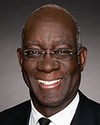Mr. Casey, we absolutely receive data on turnaround times, and specifically on the question of first applications. [Technical difficulty—Editor] depending on who you ask. The department reported certain data to this committee and used a different method of calculation from the one we use. It's important that the committee be able to compare apples to apples and oranges to oranges when looking at the data.
We look at first applications. The department looks at all applications. That includes second applications, which are typically much faster, and “red-zone” applications, which are fast-tracked right from the start because the veteran might be over the age of 80 or might be so seriously injured that it's obvious that assistance is needed rapidly. We do have those data. It gets even more complicated if you look at, for example, average wait times compared to median wait times.
The point we're trying to make is that there's no doubt that francophones wait longer than anglophones and women wait longer than men, and if you're a francophone woman, you wait longer than everyone else. That hasn't changed, but the gap is narrowing.
VAC is looking at data month to month. We look at it year to year, so we'll be looking at it again this year, comparing the year ended March 31 to last year's wait time. We get a full year's worth of data, and we can see the improvement year over year, to the extent that there is improvement. We know there have been a number of initiatives, but we need to look at the actual numbers to see what that means.





